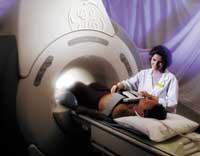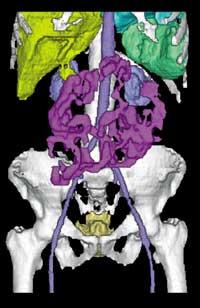How many radiations do we receive?

For many scientists, the information collected over the past 20 years indicates that the health risk of low-intensity radiation is disregarded. But what is radiation? Ionizing radiations, as the word says, are able to ionize, that is, to absorb electrons from the atoms they find along the way. The human being supports ionizing radiations of the same influence but of different origin. The first separation between ionizing radiations is performed according to their origin, either natural or artificial. The whole of natural radiation is formed by the ultraviolet ray emitted by the Sun, the radiation coming from space and that produced by the atmosphere and the Earth. Radiations from nuclear power plants from various medical devices – positron chambers, x-rays, scanners, etc. – are included in the artificial radiation group.
What influence do they have?
To know the effect of radiation it is essential to know, on the one hand, the type and intensity of the radiation emitted and, on the other, the amount of radiation that the body receiving the radiation can withstand.
Gray (Gy) and milligray (mGy) are units of measurement of the amount of energy released per kilogram of matter that produces radiation. Sievert (Sv) and milisievert (mSv) are used to measure the dose that living beings can receive. A sievert would result from multiplying a gray by a “quality Q” factor. This factor depends on the type of radiation -for example, for alpha particles this factor is 20, for X, gamma or beta radiation is 1-.
Taking into account body integrity, the effect depending on the radiation dose received is:
- 0-250 mGy. No short-term or long-term incidence has been detected.
- 250-1000 mGy. Nausea and loss of leukocytes, although they then recover. Long-term cancer risk is estimated to increase.
- 1,000-2,000 mGy. Vomiting and changes in blood composition. The adoption of appropriate measures does not generate any additional problems. In the long run, as in the previous case, the risk of cancer increases.
- 2,500-5,000 mGy. Very serious health consequences. It is essential to go to the hospital without curative certainty.
- More than 5,000 mGys. Safe death.
Higher doses are also used in radiation therapy, but their use is limited and controlled, so they have no greater incidence.

There is also another type of data that refers to the dose that humans receive each year. As it was 1988 data from the United Nations Scientific Committee on the Effects of Atomic Radiation (UNSCEAR), it cannot be said to be very new. These statistics have distinguished between natural radiation and artificial radiation. As far as natural radiation is concerned, each human being receives an average radiation dose of 2.4 mSv each year, broken down into: 0.4 mSv radiation from space and the Sun. 0.4 mSv produced by radioactive elements on Earth, mainly uranium, thorium and potassium. Of course, depending on the nature of the earth, this data varies greatly from place to place. 1.6 mSv inspired and powered. The annual average of artificial radiation per inhabitant on Earth is 1.1 mV. According to the report, 1 mSv comes from the use of medical devices, the rest of 0.1 industrial areas - and, although it seems surprising, only 0.02 mSv in the nuclear industry.
To know how much radiation the body can withstand, in addition to the dose, the type of radiation is important. As is known, three types of radioactivity are distinguished: alpha -when helium nuclei are emitted, beta -when electrons or positers- and gamma -photoies-. To determine which is the most dangerous one must take into account the distance that each one of them can travel when liberated, since the greater the distance traveled, the greater the number of living beings they can capture. Then, when you meet the self, if you enter the interior and are able to travel a great distance in the body, the damage increases.
Alpha particles, for example, cannot go through normal paper, and beta particles can be immobilized with a thin sheet of aluminum. Therefore, they could not enter through the skin, but have the way open with breathing or feeding. Gamma radiation is easily penetrable by the surface. Therefore, gamma particles are considered more dangerous, but this does not have to be true, for example, if inhaled alpha particles penetrate the blood, they would quickly contaminate the whole body. The case of tobacco is significant, since smoke inhalation is usually accompanied by the ingestion by smokers of several isotopes, elements that then damage the lungs.
Is everything bad?

A question is asked in the title, but it has a difficult answer. When talking about the advantages of using radiation, experts often make an extensive list to sterilize devices used in medicine, to protect works of art from fungi, bacteria, etc., to be able to make new materials lighter and harder, to detect failures in industries, to make leak and fire detectors, to make luminous coatings, such as clocks, power supply to satellites, etc. These advantages are undeniable. But there are situations that do not generate much confidence in this issue. For example, and in this sense, it is worth mentioning the international radiation protection regulations. Its origin dates back to 1928. Too old? However, until Americans have seen the results of the research program they have launched now, they have not been given any better opinion.
Published in 7
Buletina
Bidali zure helbide elektronikoa eta jaso asteroko buletina zure sarrera-ontzian











